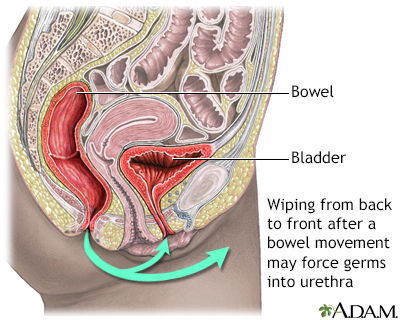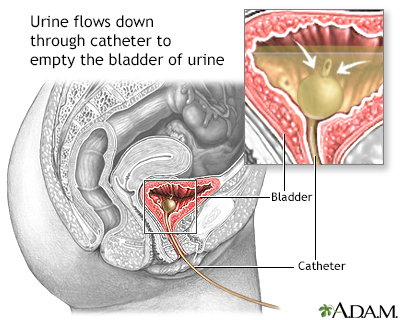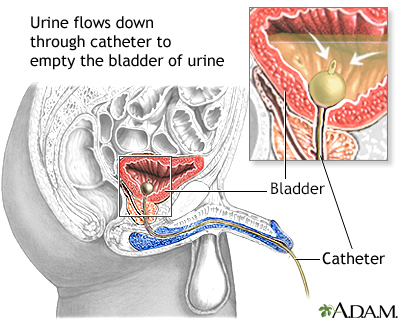Common Pregnancy Symptoms to Expect During Each Trimester
“Everything grows rounder and wider and weirder, and I sit here in the middle of it all and wonder who in the world you will turn out to be.” — Carrie Fisher…

Update your location to show providers, locations, and services closest to you.
A urinary tract infection, or UTI, is an infection of the urinary tract. The infection can occur at different points in the urinary tract, including the:
Bladder infection - adults; UTI - adults; Cystitis - bacterial - adults; Pyelonephritis - adults; Kidney infection - adults
Most UTIs are caused by bacteria that enter the urethra and then the bladder. The infection most commonly develops in the bladder, but can spread to the kidneys. Most of the time, your body can get rid of these bacteria. However, certain conditions increase the risk for having UTIs.
Women tend to get them more often because their urethra is shorter and closer to the anus than in men. Because of this, women are more likely to get an infection after sexual activity or when using a diaphragm for birth control. Menopause also increases the risk for a UTI.
The following also increase your chances of developing a UTI:
The symptoms of a bladder infection include:
If the infection spreads to your kidneys, symptoms may include:
Most of the time, you will need to provide a urine sample for the following tests:
Blood tests such as complete blood count (CBC) and a blood culture may be done as well.
You may also need the following tests to help check for other problems in your urinary system:
Your health care provider must first decide if the infection is just in the bladder, or if it has spread to the kidneys and how severe it is.
MILD BLADDER AND KIDNEY INFECTIONS
RECURRENT BLADDER INFECTIONS
Some women have repeated bladder infections. Your provider may suggest that you:
MORE SEVERE KIDNEY INFECTIONS
You may need to go into the hospital if you are very sick and cannot take medicines by mouth or drink enough fluids. You may also be admitted to the hospital if you:
At the hospital, you will receive fluids and antibiotics through a vein.
Some people have UTIs that do not go away with treatment or keep coming back. These are called chronic UTIs. If you have a chronic UTI, you may need stronger antibiotics or to take medicine for a longer time.
You may need surgery if the infection is caused by a problem with the structure of the urinary tract.
Most UTIs can be cured. Bladder infection symptoms most often go away within 24 to 48 hours after treatment begins. If you have a kidney infection, it may take 1 week or longer for symptoms to go away.
Complications may include:
Contact your provider if you have symptoms of a UTI. Contact your provider right away if you have signs of a possible kidney infection, such as:
Also contact your provider if UTI symptoms come back shortly after you have been treated with antibiotics.
Diet and lifestyle changes may help prevent some UTIs. After menopause, a woman may use estrogen cream around the vagina to reduce infections.






Cooper KL, Badalato GM, Rutman MP. Infections of the urinary tract. In: Partin AW, Dmochowski RR, Kavoussi LR, Peters CA, eds. Campbell-Walsh-Wein Urology. 12th ed. Philadelphia, PA: Elsevier; 2021:chap 55.
Nicolle LE, Drekonja D. Approach to the patient with urinary tract infection. In: Goldman L, Schafer AI, eds. Goldman-Cecil Medicine. 26th ed. Philadelphia, PA: Elsevier; 2020:chap 268.
Sobel JD, Brown P. Urinary tract infections. In: Bennett JE, Dolin R, Blaser MJ, eds. Mandell, Douglas, and Bennett's Principles and Practice of Infectious Diseases. 9th ed. Philadelphia, PA: Elsevier; 2020:chap 72.
“Everything grows rounder and wider and weirder, and I sit here in the middle of it all and wonder who in the world you will turn out to be.” — Carrie Fisher…
